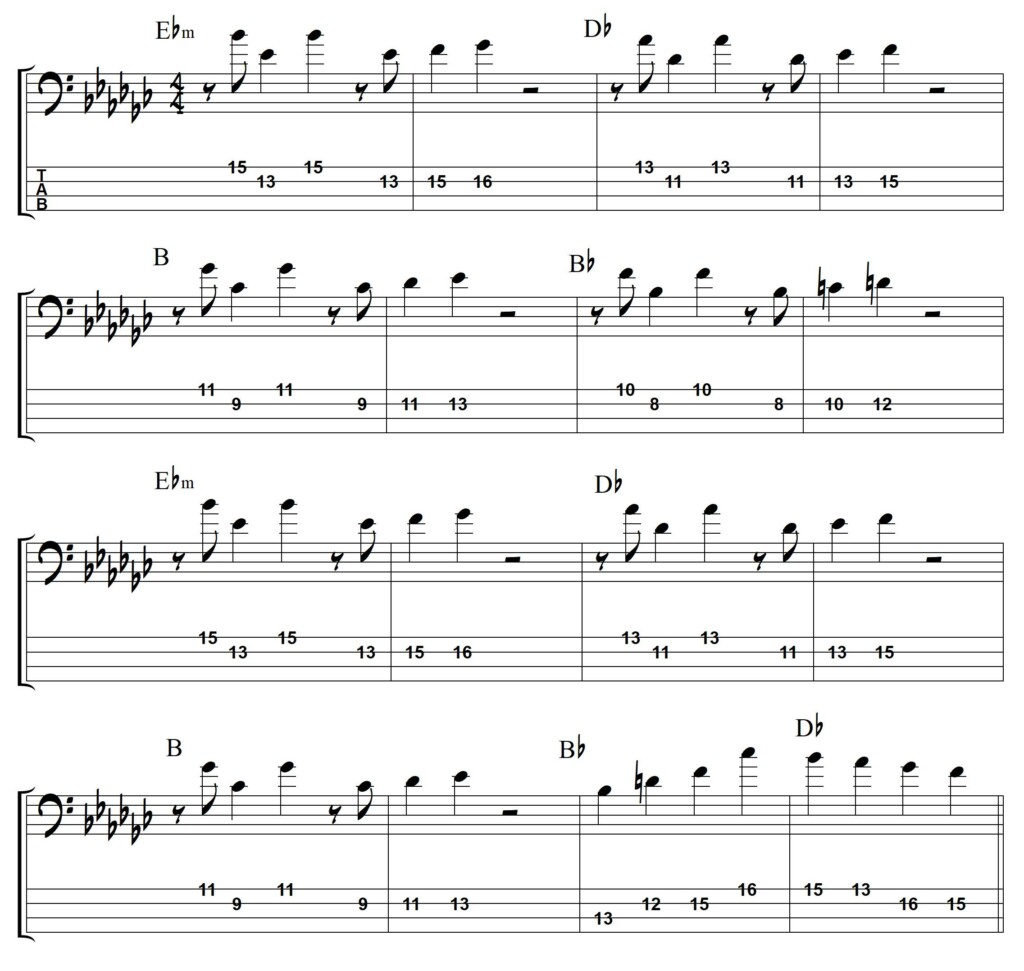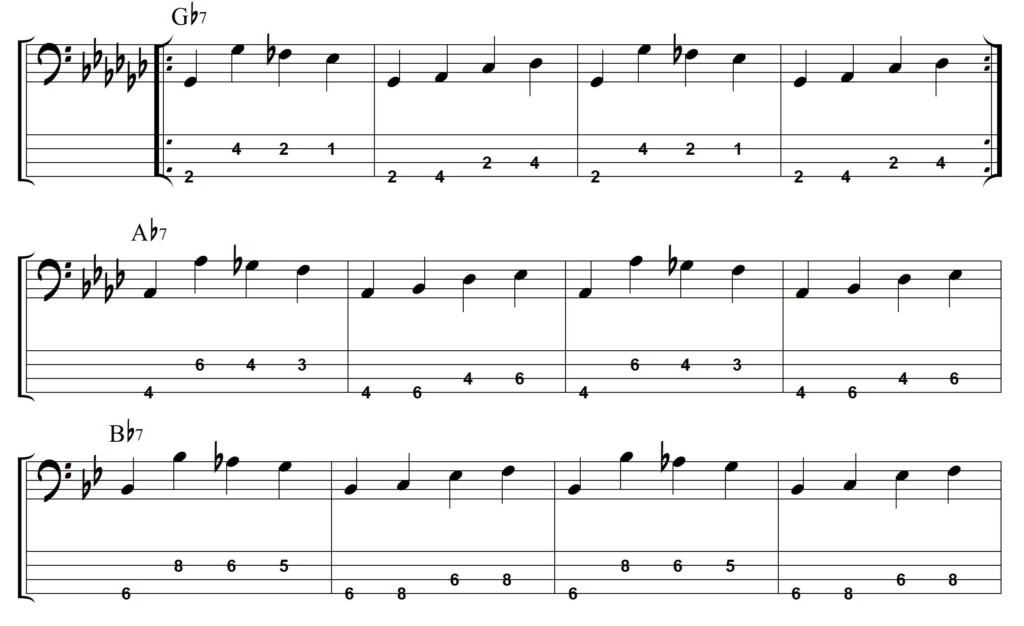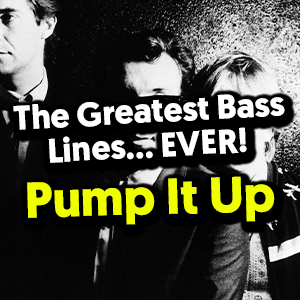Today we’re going to look at an absolute classic bass line from a classic song: Good Vibrations by The Beach Boys. The bass line was conceived by Beach Boys genius Brian Wilson and played by the legendary Carol Kaye.
It’s not a difficult bass line to play from a technical standpoint but it’s incredibly inventive in places and has a great groove in others. The two sections we’re going to focus on are the verse lines and the walking chorus riff.
The Amazing Carol Kaye
Carol Kaye is an absolute legend in the world of bass. As part of the LA session musician power house called ‘Wrecking Crew’ – She played on hundreds, if not thousands, of hit records, movies and TV themes. If you want to be totally blown away, then check out the polyphonic channel on Youtube.
Good Vibrations
Carol’s main bass on these sessions was a Fender Precision and she was well known for her muted tone. So for this lesson, I’m using a Fender Precision 50’s reissue strung with flatwounds and I’m playing with a pick.
Good Vibrations is a Beach Boys classic, there are tempo change and modulations all over the place. It’s got an orchestral arrangement, incredible vocal harmonies and even a theremin!
Verse
We are at 152bpm and this is played as shown on the stave and TAB below. Even though the melody on the bass is interesting, it’s actually the rhythm that’s equally intriguing. For example, we don’t come in on the beat. We come in on the “&” of beat 1. Also we are accenting beats 2 and 3 in the first bar, and beats 1 and 2 in the second bar.
So next we basically repeat that line rhythmically and we melodically descend through the chord progression. It moves down a whole step each time, while accenting the quality of the chord. By “quality” I mean wether it’s Major or minor. Be careful to use alternate picking while using a pick and use the one-finger-per-fret method where you can in your fretting hand.

Harmony Breakdown
For this particular bass line, it’s important to understand the underlying chord progression and harmony. We are in the key of Eb minor, and we descend through the chords Eb minor, Db Major, B Major (aka Cb Major) and Bb Major. This is a basic descent through a minor key: I, VII, VI and V. The best way to memorise that is to work through the arpeggios as shown below.
There is a clever variation in that chord V has been altered to a Major chord, normally this is minor in a minor key, this means that we are making use of the Harmonic minor scale. That particular chord progression is very commonly found in minor keys and is referred to as the Andalusian Cadence.

Bass Counterpoint
Another cool thing about this bass line, is that it starts on the 5th of the chord each time. The 5th of the chord combined with the entry on the & of beat 1 makes me wonder if the line was written to act as a counter melody to the double bass in the orchestration. The electric and double basses are working in combination to create one whole melody line.
Verse Ending
For the second half of the verse, we just repeat everything that we just played but on the final bar we have a totally different line. This run can be seen in bars 15 and 16 of the verse as shown on the stave and TAB. You can choose to pick this part using alternating picking or just using downstrokes. The rhythm here is totally different as it’s just straight quarter notes, but this helps to set up the walking bass line in the next section.
Harmonically, we have a Bb Major chord moving to a Db Major, this leads nicely into the next chord of Gb Major – which is a modulation from what went on earlier. The Db Major in this case is known as a “pivot chord” as it is a chord that is common to both keys to help the transition move seamlessly. It just so happens that our starting key of Eb minor is the relative minor of Gb Major. So we are switching to a closely related key, which helps the whole thing modulate smoothly.
Verse Playthrough
In terms of practice, you can just play the line away from the original recording, just be sure to keep time with that foot and focus and the correct rhythmic entry. Once you have the notes under your fingers, you can try playing it to a metronome starting slowly at first and then gradually building up speed. Once you are happy, then try playing along to the track itself at the original tempo.
Chorus
Here, we are playing straight quarter notes making this a proper walking bass line. It’s actually played at a slightly slower tempo then the verse, the verse is 152bpm while the chorus is 150bpm. We are in the key of Gb Major here and the walking line moves around the Gb7.
You play through this four times, then the whole things shifts up a key to Ab Major. We take the same pattern we were playing on the Gb7 and just move the whole thing up a whole step. You play this twice, then move up another whole step to the Key of Bb which you again play twice around.

Mixolydian Harmony
As you play through this walking line, you may notice the flattened 7th which gives it that bluesy sound. This means that we are using a more Mixolydian modality rather than a more conventional Major. This is why the chords in the chorus are called 7 chords rather than Maj, they have that flattened 7th degree which causes us to use the Mixolydian scale here instead.
Chorus Playthrough
So again, get the notes under your fingers away from the original track, play to a metronome and build up in tempo as you go. Be sure to pay special attention to your picking hand technique when using a pick or plectrum and most of all have fun!













Excuseme Mark. Why they use Db instead of D if the seventh in the Harmonic minor of Eb is D? I think that so sound better, but D should be the seventh. it isnt
Carol Kaye has nothing to do with “Good Vibrations” except for using the lie that she played on it to line her pockets by selling books. She was not at the recording sessions. However, Ray Pohlman was. You know: the guy actually credited on the record.
She is an absolute fraud in the world of bass. She’s about credited on around 400 recordings, nowhere near 10,000. I’ll bet out of ten things you think she’s played, she didn’t on two of them.
“Carole played on Good Vibrations” – Brian Wilson, direct quote, on film. You are being pathetic, grow up.
Why didn’t Brian mention that during the documentary on the making of Good Vibrations. https://www.youtube.com/watch?v=9UqNvMOdhGU . I guess he’s in on the conspiracy.
Or perhaps that’s the exact nature of session musicians – they perform in the studio for the recording session in place of band members.